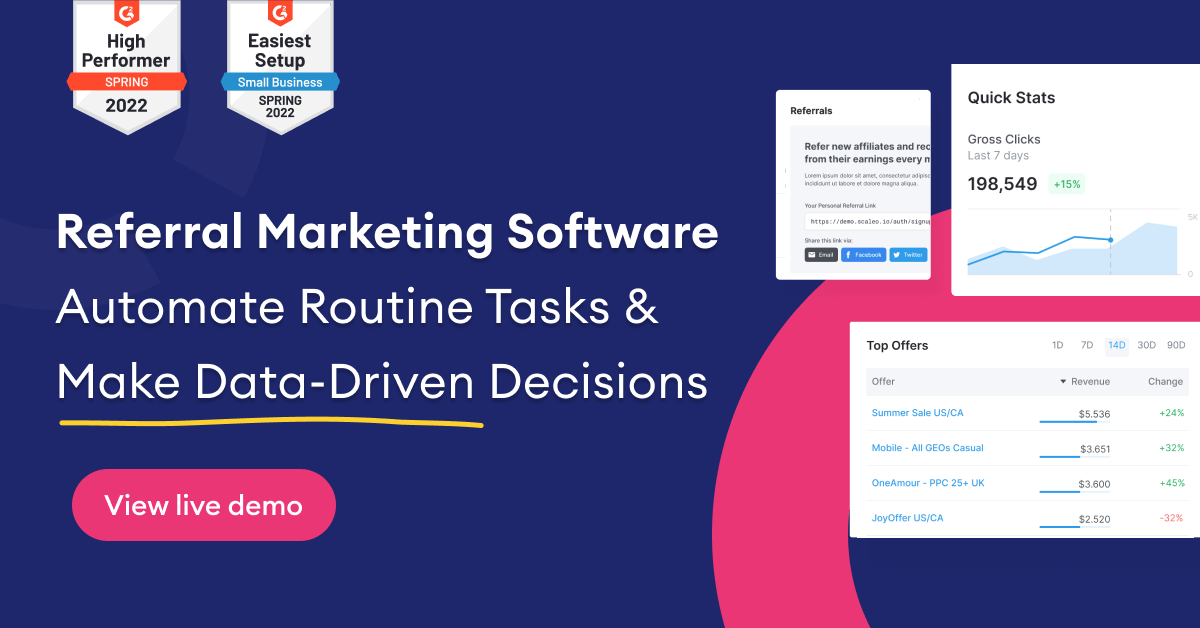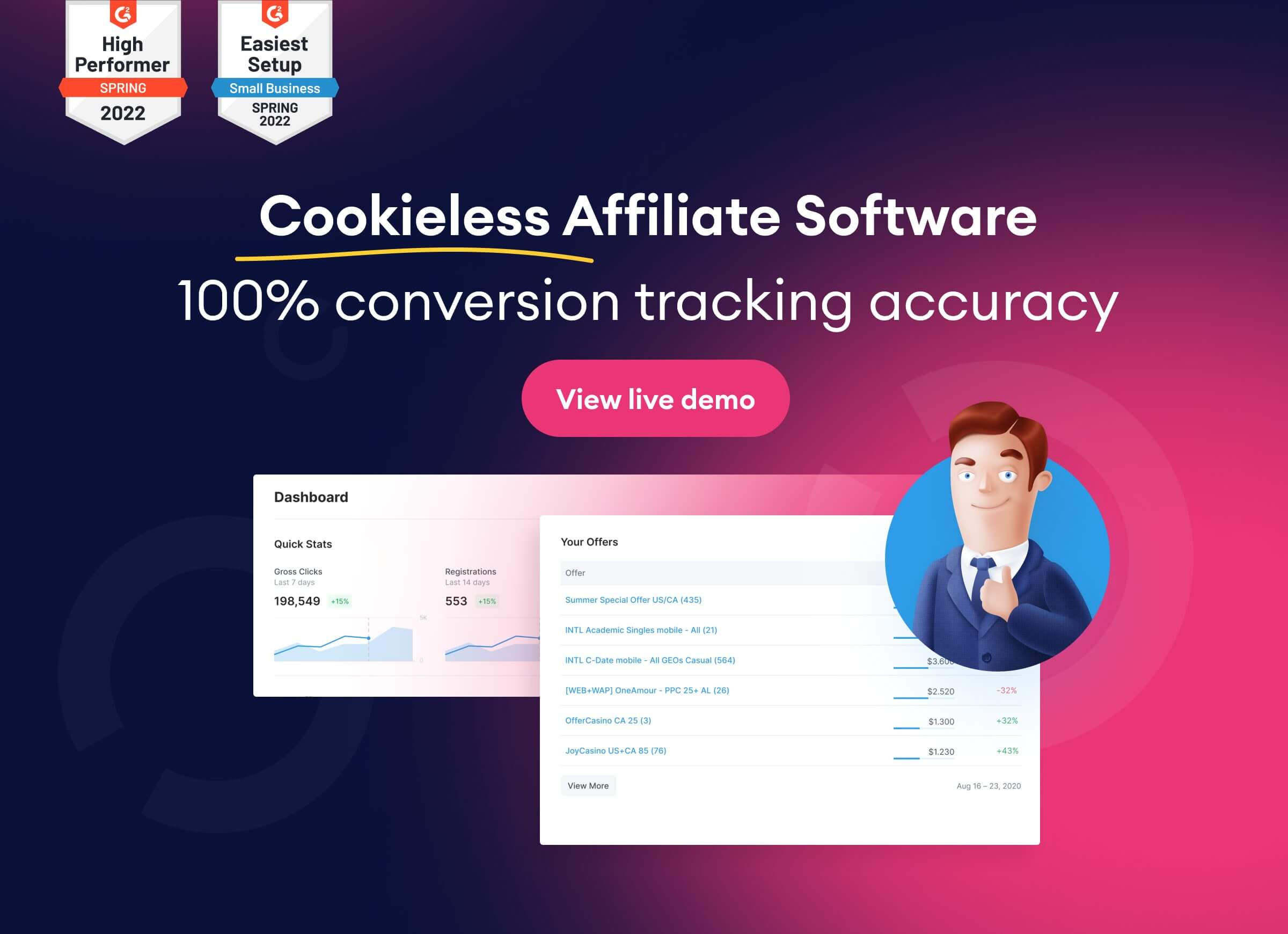Attribution analytics in affiliate marketing is a crucial aspect of digital marketing that helps businesses track where their sales are coming from. Far from being a complex idea, it’s pretty straightforward: it’s all about knowing who’s bringing in the bucks!
Attribution analytics is like a detective solving the mystery of which affiliates are genuinely pulling their weight. When it comes to making money online, it’s not just about who clicked what.
It’s about understanding the customer’s journey through affiliates’ eyes.
This insight can help businesses to invest their time and money more wisely in their marketing efforts.
So, if you’re ready to dive deep into the nitty-gritty of affiliate marketing, you’re in the right place. We’re here to make sense of attribution analytics, so you can make it work for your business.
In affiliate marketing, understanding attribution analytics is crucial for maximizing profit and optimizing marketing spend. This article will explore attribution analytics, why it is important in affiliate marketing, and how it works.
Buckle up; it’s going to be an enlightening ride!
What is Attribution Analytics?
Attribution analytics refers to assigning credit or value to the various marketing channels and touchpoints that contribute to a customer’s journey toward making a purchase.
It aims to answer the question, “How should I allocate my marketing spend to maximize profit?”
In affiliate marketing, attribution analytics becomes even more complex, as it involves determining which affiliate publisher is responsible for closing a transaction or initiating the clickstream that leads to a sale.
This information is crucial for understanding the value that affiliate publishers add to overall performance.
Why is Attribution Analytics Important in Affiliate Marketing?
The path a customer takes to purchase can be long and convoluted. They may visit comparison sites, check social media profiles, read product reviews, and more. This complexity makes it difficult for marketers to determine which marketing channel has the biggest impact on closing the deal.
By utilizing attribution analytics, marketers can gain insights into the effectiveness of different marketing channels and make data-driven decisions.
It enables them to allocate their marketing budget more effectively, identify high-performing affiliate publishers, and optimize their overall marketing strategy.
How Does Attribution Analytics Work in Affiliate Marketing?
It involves analyzing raw data and performing detailed analysis to uncover valuable insights. By tracking customer touchpoints and interactions, marketers can attribute value to each marketing channel involved in the customer’s journey.
There are several techniques and tools available to implement attribution analytics.
Looking to track all the touchpoints of your marketing channels?
Try Scaleo free for 14 days; no credit card is required!

With the right technical setup, marketers can track and measure the performance of affiliate publishers, identify introducers, influencers, and closers, and dive deeper into the data to uncover valuable insights.
By leveraging the power of attribution analytics, marketers can understand how different marketing channels contribute to conversions. This knowledge allows them to make informed decisions, optimize their marketing efforts, and ultimately increase revenue and improve the return on ad spend.
In other words, it is a vital component of affiliate marketing. It enables marketers to attribute value to different marketing channels and optimize spending accurately. Marketers can take their affiliate marketing efforts to new heights by understanding the concept of attribution analytics, its importance, and how it works. Stay tuned for more valuable insights on this topic in the upcoming sections.
Different Types of Attribution Models
An attribution model is a set of rules that helps gather and analyze this information.
Let’s explore some of the different types of attribution models commonly used in affiliate marketing.
First Click Attribution
First Click Attribution is an attribution model that gives all the credit to the first interaction or touchpoint a customer has with your business before converting. In this model, the initial ad or link that introduced the brand receives 100% of the credit. However, it’s important to remember that this model disregards the subsequent steps that led to the final conversion.
For instance, imagine a customer clicking on a banner ad and visiting your website but not making a purchase. Days later, they might be served a retargeting ad, which they click, but still don’t convert. They then visit your blog, learn more about your brand and product, and follow your business on social media.
Finally, they see a post on social media that leads them to make the conversion.
In this scenario, First Click Attribution would credit the banner ad with the sale, completely ignoring the role played by the retargeting ad, the blog, and the social media post.
Last Click Attribution
Last Click Attribution, also known as Last Interaction or Last-Touch Attribution, is the opposite of First Click Attribution. It assigns all the credit to the last interaction or touchpoint before a conversion occurs.
In our previous example, the social media post would receive 100% of the credit, as it was the last touchpoint before the sale occurred.
This model is often considered the simplest and is commonly used as the default in analytics platforms.
Nevertheless, it overlooks the entire customer journey leading up to the final interaction. While it may seem logical to credit the last touchpoint, it fails to acknowledge the impact of previous touchpoints that influenced the customer’s decision to convert.
Linear Attribution
Linear Attribution is an attribution model that evenly distributes credit across all touchpoints or interactions a customer has with your business leading to a conversion. In this model, every touchpoint receives an equal share of the credit.
Using our previous example, if the customer journey involved the banner ad, retargeting ad, blog visit, and social media post, each touchpoint would be credited with 25% of the sale.
This model recognizes the importance of every interaction along the customer’s path, giving equal weight to each touchpoint.
Time Decay Attribution
Time Decay Attribution is an attribution model that gives more credit to touchpoints that occur closer to the conversion. It acknowledges that the impact of touchpoints tends to increase as the customer gets closer to making a purchase.
In this model, the touchpoints that happened earlier in the customer journey receive less credit, while the touchpoints that occurred closer to the conversion receive more credit.
The final touchpoint played a more significant role in influencing the conversion than the touchpoints at the beginning of the journey.
Position Based Attribution
Position Based Attribution, also known as U-Shaped Attribution, is an attribution model that assigns the most credit to the first and last touchpoints while also giving some credit to the touchpoints in between.
It recognizes that the first and final interactions are often the most influential in a customer’s decision to convert.
Using this model, the first and last touchpoints might each receive 40% of the credit, while the remaining touchpoints share the remaining 20% equally.
This approach acknowledges the significance of the initial introduction to the brand and the final push leading to the conversion.
Knowing the various attribution models helps advertisers examine the influence of each marketing channel or touchpoint. This enables them to choose where to invest resources and improve their strategies. Businesses can improve their marketing efforts and continue to be successful in affiliate marketing by accurately determining the value of each touchpoint.
Analyzing Attribution Data in Affiliate Marketing
As you can already see, analyzing affiliate attribution data is crucial for maximizing profit and improving the return on ad spend (ROAS).
Understanding the customer’s journey and determining the most effective marketing channels can be complex, but it helps you make informed decisions.
Data Collection and Tracking
The first step in analyzing attribution data is collecting and tracking relevant data points.
This involves setting up tracking codes and implementing analytics tools to monitor customer interactions and behavior across different channels.
Marketers can gather data on clicks, impressions, conversions, and other important metrics to get useful insights into how well their affiliate marketing is working.
Determining Conversion Paths
Once the data is collected, the next step is determining customers’ conversion paths before purchasing.
This involves analyzing the customer journey and identifying the touchpoints contributing to the final conversion.
Analyzing Attribution Metrics
Analyzing attribution metrics is crucial for evaluating the performance of different marketing channels and publishers.
Metrics such as first-click, last-click, and multi-touch attribution provide insights into which channels drive the most conversions.
Identifying the Most Effective Marketing Channels
One of the main goals of analyzing attribution data is to identify the most effective marketing channels. This involves determining which channels drive the most conversions and generate the most revenue. Identifying the top-performing channels, allows us to allocate resources more efficiently and focus on the strategies that deliver the best results.
Marketers can make data-driven decisions and achieve greater success in their affiliate marketing campaigns by determining conversion paths, analyzing attribution metrics, and identifying the most effective marketing channels.
Implementing Attribution Analytics in Affiliate Marketing
Comprehending the customer journey and accurately attributing conversions to specific channels is crucial for maximizing profit.
However, this can be quite challenging due to the complex nature of the process. This section will discuss how to implement attribution analytics in affiliate marketing effectively.
Choosing the Right Attribution Model
Before diving into the technical aspects of implementing attribution analytics, choosing the right attribution model for your affiliate marketing strategy is important.
There are various models to consider, such as first touch, last touch, linear, time decay, and position-based models. Each model has its strengths and weaknesses, so it is important to carefully evaluate which model best aligns with your business goals and objectives.
Selecting the Appropriate Attribution Tools
Once you have chosen the right attribution model, the next step is to select the appropriate attribution tools. These tools will help you collect and analyze the necessary data to attribute conversions to different marketing channels accurately.
Many tools are available in the market, ranging from free to paid options. Choosing a tool that suits your budget, offers robust tracking capabilities, and provides actionable insights is crucial.
Integrating Attribution Analytics with Affiliate Networks
To effectively implement attribution analytics in affiliate marketing, it is necessary to integrate your chosen attribution tools with your affiliate networks.
This integration allows you to track and measure the performance of individual affiliates and their respective marketing efforts. You can make data-driven decisions to optimize your affiliate marketing strategy.
Optimizing Marketing Strategies based on Attribution Data
Once you have collected and analyzed the attribution data, it is time to optimize your marketing strategies based on the insights gained. The attribution data can provide valuable information about which channels drive the most conversions, which affiliates perform best, and which marketing tactics are most effective.
You can decide where to allocate your marketing budget, which affiliates to prioritize, and which marketing tactics to focus on for maximum impact.
Implementing attribution analytics in affiliate marketing is a powerful way to understand the customer journey better and make data-driven decisions to optimize your marketing strategies.
Conclusion
Attribution analytics plays a critical role in affiliate marketing. Given the complex and multi-channel journey, customers go through before making a purchase, it can be challenging for marketers to determine which channel has the greatest impact on closing a deal.
However, by leveraging raw data and performing detailed analytics, marketers can gain valuable insights into affiliate publishers’ value to their overall performance.
Evaluating the contributions of different publishers and channels can help you leverage marketing spending more effectively, maximize profits, and improve return on ad spend (ROAS).
By diving deeper into the data, marketers can uncover valuable information leading to revenue growth. This includes identifying the most effective channels, optimizing campaigns, and refining targeting strategies. The benefits of using raw data in attribution analytics are undeniable and can significantly impact the success of affiliate marketing efforts.

In summary, attribution analytics and raw data analysis are essential tools for marketers in the affiliate marketing industry. These tools allow marketers to make informed decisions, optimize their campaigns, and maximize their revenue potential.
Last Updated on August 20, 2023






